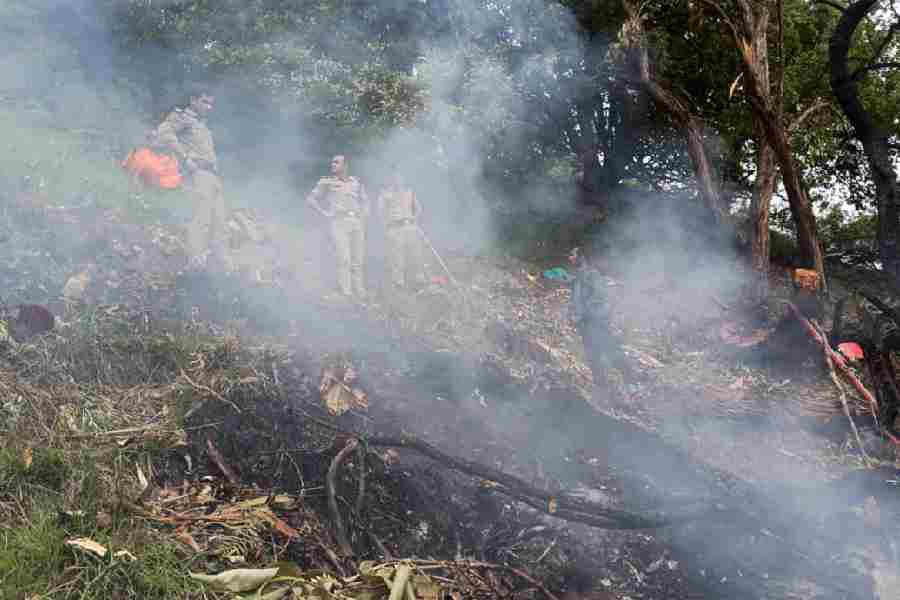
Jorhat, Oct. 11: Just a simple song of welcome wasn't deemed enough to greet some very special winged visitors to Nagaland this year.
India Post, under the ministry of communications and information technology, will release a special cover (envelope) to commemorate the completion of the second cycle of migration of Amur falcons, that will be arriving in the state shortly.
The special envelope will be released during the Lotha Festival in Kohima on November 7.
"The two satellite-tagged birds, Pangti and Naga, will complete their second cycle of migration, covering approximately 44,000km. To commemorate the event, the postal department has agreed to release a special cover," M. Lokeswara Rao, the principal chief conservator of forests and head of the forest force of Nagaland, told The Telegraph today.
Rao said the special cover would have photographs of Pangti and Naga and the migratory route the two birds have been following in the past two years.
"We have prepared 5,000 special covers and these have been sent to the postal department for approval," he said. Amur falcons come to roost at Doyang Lake in Wokha district of Nagaland every year, during their flight from Mongolia to Africa. The falcons travel almost 22,000km every year and come to Doyang every year in millions. They spend nearly a month in Doyang on the bank of the water reservoir of the Doyang hydroelectric project.
Three birds - Naga, Wokha and Pangti - were fitted with satellite-tracking chips at Doyang on November 7, 2013, to study their flight route. This was the first time in India that Amur falcons, the migratory raptors, were fitted with satellite-tracking devices. While the tracking chip on Wokha has been inactive since last year, Naga and Pangti were spotted near Beijing yesterday and were on their way to Nagaland. "A few falcons have already arrived at the lake in Doyang and we are expecting Naga and Pangti by end of October," Rao said.
"Everyone - from scientists to villagers at Wokha district - is extremely excited and everyone is asking about their position," he added.
After the birds were tagged, they flew over Assam, Bangladesh, Bay of Bengal, southern India, Arabian Sea and reached South Africa. From there, some went to Botswana and others to Tanzania. After spending a few months there, they started returning to their homeland in Mongolia and on the way rested for a few days in Nagaland. The birds have been following the same route for the last two years. Rao said a "welcome the incredible Amur falcons" programme was organised at Pangti village yesterday and the villagers sang to greet the birds.
Donating Rs 25,000 that was received as the Tigerland Biodiversity Conservation award 2015 for a commendable job done to protect the Amur falcons to the Pangti village authorities, Rao requested the villagers to carry on the good work.
Nagaland had witnessed the killing of hundreds of Amur falcons every year till 2012, when the authorities and the villagers of Pangti took a pledge to protect these birds.
The state managed to keep the promise and there were no reports of a single bird being killed in the last two years.
The state also made international headlines with the achievement and the authorities and the villagers were praised for their efforts.











